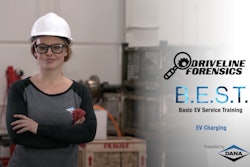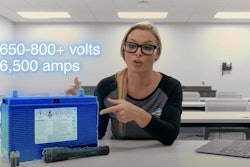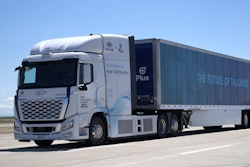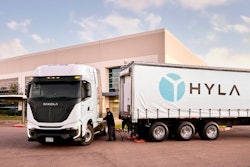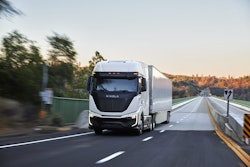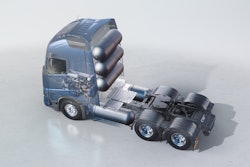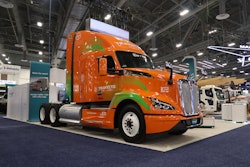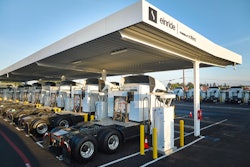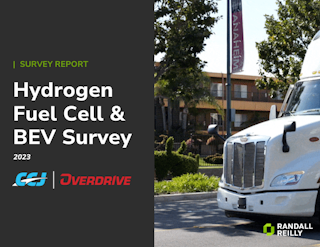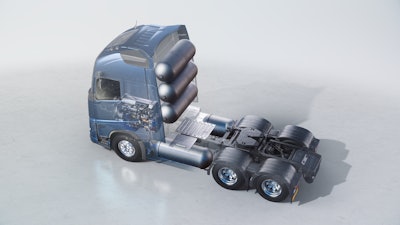
Volvo Trucks North America (VTNA) announced last month at the 2024 ACT Expo plans to build tractors with combustion engines that run on hydrogen, with road testing due to begin in 2026. Lab testing is currently underway. This is part of the company’s three-pillar strategy with battery electric, hydrogen fuel cell, and renewable fuels in the internal combustion engine.
Hydrogen combustion, which lacks equal attention compared to its electric fuel cell counterpart, is a near zero-emissions solution that’s viable and technologically doable. Many industry officials believe it could serve as a more near-term solutions towards zero emissions long-hauling. Hydrogen combustion-powered tractors would share the same operational and reliable refueling infrastructure as electric fuel cell-powered tractors.
And therein lies the problem. Volvo Trucks and others are understandably concerned.
Don't repeat mistakes
Speaking to Clean Trucking, Keith Brandis, vice president of system solutions and partnerships for Volvo Trucks North America, hopes government infrastructure policies for hydrogen fueling - at the state and federal level - will not repeat the mistakes made with the BEV (battery electric-vehicle) charging infrastructure.
“We still have this disconnect with the total grid interconnection, both capacity and the speed to connect and we don't want to repeat that again in terms of the hydrogen future,” Brandis said. “So we need to come together as the hydrogen infrastructure is being rolled out and make sure that it's not only cost competitive, which today [means that] buying hydrogen at a light duty station is very expensive, but also that it’s available for the transportation industry in the way we operate.”
Volvo Trucks’ hydrogen competitors, Hyundai, Kenworth, Peterbilt, and Toyota, share these H2 infrastructure problems. Another rival, Nikola’s HYLA subsidiary, is taking the bold step of building a hydrogen supply chain and refueling stations for Class 8 fuel cell tractors and other customers’ vehicles.
Located mostly in California, the goal is to have nine stations operational by the middle of this year and 14 by year’s end. By 2026, HYLA aims to open 60 stations.
[Related: Nikola’s second HYLA hydrogen refueling station opens in Southern California]
The federal government, however, is not keeping up with the industry's pace.
“I'm not laying all the blame there, but we still lack [national] policies,” Brandis continued. “We still lack regulatory fast tracking for permitting.”
Some states, specifically California, Oregon, and Washington state, have low carbon fuel credits and other incentives towards renewable energy that are helping both with the purchase of more expensive and cleaner vehicles, and for the fueling infrastructure.
Meanwhile, battery-electric semis are already moving freight in California and, later this year, the East Coast thanks to charging infrastructure as a service companies like WattEV, Voltera, and Zeem Solutions.
Factoring in megawatt charging, PepsiCo is successfully reaching 1,000 miles on a single charge with its Tesla Semi fleet. But this is being done at the regional rather than national level.
[Related: Voltera CEO: 'Megawatt charging can’t come soon enough']
Volvo Trucks announced last month the creation of Volvo on Demand, a similar program designed to assist fleets' acquisition of BEVs and to help reduce the upfront costs.
“I think that we learned the hard way with our battery-electric vehicles,” Brandis said. “The trucks came to the market quicker than the infrastructure.”
States also don't have equal low carbon credits, making infrastructure construction even more challenging and expensive.
“We're trying to approach it at both the federal and the state ends to make sure that policies and incentives are aligned for the adaptation of these future technologies. It's still a patchwork,” Brandis added.
What the feds are doing
Despite the lack of major progress towards a coast-to-coast hydrogen refueling network, the federal government has been making efforts towards doing so and to lower fuel costs.
According to the 2024 State of Sustainable Fleets Report, the Department of Energy (DOE) allocated $7 billion to seven proposed fuel production and distribution hubs in 16 states last year.
One major goal is to reduce hydrogen production costs to $1/kilogram. Currently, it costs at least $5/kilogram, or up to $12/kilogram when accounting for delivery and fueling station expenses.
The DOE hopes its efforts will spur over $40 billion in private investment.
Companies that won the hydrogen hub contracts will be negotiating the terms this year. Unfortunately, it will require several years until these hubs make any impact on price and supply.
Last December, the DOE proposed initial draft terms for the Clean Hydrogen Production Tax Credit (45V). It would create a 10-year incentive program for clean hydrogen of up to $3/kg.
For its part, Brandis said that Volvo Trucks will continue "to meet with US hydrogen fuel producers, providers, and distributors in order to plan for forecasted lower fuel costs, improved availability and increased capacity. We will apply our lessons learned with the VNR Electric introduction which needed the charging infrastructure to develop at the same pace as our BEV truck deliveries to customers."

